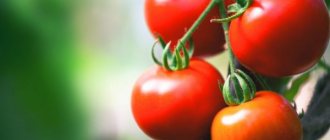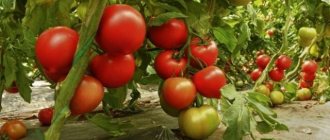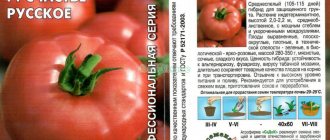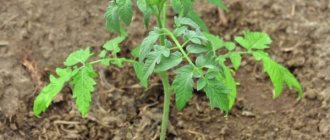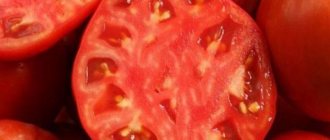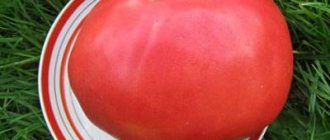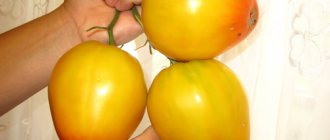Description of the variety
The cucumber hybrid “RMT” is distinguished by its early ripening period.
The first harvest of greens is harvested 36-44 days after the appearance of full shoots. Fruit:
- They have an oval-cylindrical shape;
- Rich green color, with small stripes of a whitish tint;
- With a finely tuberous peel, with white spines and medium-density pubescence;
- With aromatic, crispy pulp, without bitterness;
- Length - from 11 to 13 cm;
- The average weight varies from 120 to 140 grams.
Bushes:
- Medium-sized, have an average degree of branching, with weak formation of green mass;
- In each leaf node, from 2 to 5 ovaries are formed;
- From 20 to 30 greens are poured on the bush at the same time.
Description of RMT cucumbers
Cucumber RMT f1 is a parthenocarpic agro variety, famous for its bunched fruit formation. Plants reach medium sizes (up to 2.5 meters) and have an average degree of branching with weak leaf development.
Cucumbers ripen 40-46 days after the RMT seeds peck, so the variety belongs to the mid-season varieties of the crop. The fruits are characterized by a cylindrical shape up to 13 cm in size.
The skin of the cucumber is covered with a thin skin with small whitish stripes. The peel is also distinguished by pubescence and spines, painted white.
Advantages and disadvantages
Hybrid "RMT" has the following positive qualities:
- Early ripening;
- Friendly fruiting;
- High productivity;
- Excellent taste characteristics;
- The marketable appearance of Zelentsy;
- Ability to self-pollinate;
- A long period of fruiting before the onset of frost;
- Possibility of growing on an industrial scale;
- Increased resistance to heat and drought;
- Tendency to bunch ovary formation;
- Cold resistance;
- Ability for long-term storage;
- Possibility of transportation over long distances.
The disadvantages of the hybrid include:
- Increased demands on lighting;
- Timely application of fertilizers;
- Control of soil moisture level.
Advantages and disadvantages of the variety
To decide which cucumber variety is suitable for cultivation in your region, you need to familiarize yourself with the main characteristics of the RMT f1 variety and study its advantages and disadvantages. Agro breeders highlight the following positive qualities of the variety.
pros
- RMTs are highly productive: up to 15 kg of crop is harvested from 1 m2;
- The variety is famous for the friendly ripening of fruits;
- Long-term fruiting;
- Cucumbers have excellent taste, which is not lost as a result of various types of processing;
- The fruits of the RMT f1 variety have excellent external characteristics;
- Cucumbers are distinguished by strong immunity to cultural pathologies;
- Resistance to transportation and long-term storage of fruits.
Minuses
Breeders note that RMT has no disadvantages. However, experience in cultivating the crop shows that cucumbers have several disadvantages:
- Lack of seeds for next planting;
- Beds with plants of this variety require regular watering.
Agricultural technology or proper cultivation
The hybrid is cultivated both by seedlings and without seedlings. Seed material for seedlings can be sown in the last days of March - in the first ten days of April. The sowing depth is from 1 to 2 cm. For germination, maintain a temperature of at least +25 degrees. Transplant cucumber seedlings to a permanent place after the end of frost. Direct sowing of seeds into the ground is carried out in the last ten days of May, deepening them by 1-1.5 cm. After sowing, it is necessary to cover with a film cover. The recommended planting pattern is 60x15 cm.
The cucumber hybrid “RMT” requires the following care:
- Water moderately with warm, settled water. Watering is carried out in the morning or evening, with the onset of coolness. The frequency of the procedure is once a week;
- Once every 14 days, plants are fed with water-soluble complex fertilizers. The main feeding is carried out at the very beginning of flowering, diluting a tablespoon of the complex preparation in a bucket of water. The hybrid responds well to the application of organic fertilizers: mullein diluted in water (1:10) or bird droppings (1:20). After the main stem produces the first harvest, the plants are fertilized with nitrogen-containing fertilizers;
- With the help of loosening, air access to the root system is improved, which has a positive effect on the development of the plant;
- Timely get rid of weeds that take away the nutrients the crop needs;
- The formation of the bush is carried out in one stem, as in the varieties “Siberian Garland”, “Perfection Itself”, “Beam Splendor”, “Envy of Everyone”, “Mels”, “Taganay”. The lower 3-4 nodes are blinded, then all shoots are removed up to the trellis. On the main stem at each node only one leaf and a bunch of greens are left;
- A high load on the main stem will require mandatory tying of cucumber bushes to a trellis, both in greenhouse structures and in open beds.
Care
The cucumber hybrid “RMT” requires the following care:
- Water moderately with warm, settled water. Watering is carried out in the morning or evening, with the onset of coolness. The frequency of the procedure is once a week;
- Once every 14 days, plants are fed with water-soluble complex fertilizers. The main feeding is carried out at the very beginning of flowering, diluting a tablespoon of the complex preparation in a bucket of water. The hybrid responds well to the application of organic fertilizers: mullein diluted in water (1:10) or bird droppings (1:20). After the main stem produces the first harvest, the plants are fertilized with nitrogen-containing fertilizers;
This will stimulate the formation of new bunches of cucumbers.
- With the help of loosening, air access to the root system is improved, which has a positive effect on the development of the plant;
- Timely get rid of weeds that take away the nutrients the crop needs;
- The formation of the bush is carried out in one stem, as in the varieties “Siberian Garland”, “Perfection Itself”, “Beam Splendor”, “Envy of Everyone”, “Mels”, “Taganay”. The lower 3-4 nodes are blinded, then all shoots are removed up to the trellis. On the main stem at each node only one leaf and a bunch of greens are left;
- A high load on the main stem will require mandatory tying of cucumber bushes to a trellis, both in greenhouse structures and in open beds.
To obtain a high yield, it is necessary to collect ripe greens regularly, as this promotes the development of new ovaries.
Reviews about the variety from those who planted
Review of the variety:
The abundance of positive characteristics makes the RMT hybrid in demand on any personal plot. On various gardening forums, gardeners leave only rave reviews about the RMT hybrid.
The hybrid "RMT", like all its "brothers" from the "Magnificent Five", are in great demand among vegetable growers. It is worth planting in your garden to appreciate the high yield, good immunity and taste of greens.
Video review of the variety:
Characteristics of the variety
The early ripening hybrid form is capable of forming a very early harvest, and a little more than a month passes from the emergence of seedlings to harvesting. The hybrid “RTM f1” belongs to the category of self-pollinating and is characterized by a bouquet arrangement of a large number of ovaries.
On each plant there is a simultaneous filling of at least thirty greens, which are distinguished by their dark green color, often tuberous and white-thorned surface. The average length of the oval-cylindrical shape of commercial greens does not exceed 12-14 cm. The flesh of greens is sweet, crisp, without voids or bitterness, with small seeds and a pronounced aroma.
The particular value of this hybrid form is not only its early ripeness, but also its high yields and excellent marketability of greens. In addition to excellent commercial and taste qualities, the hybrid form “RTM” is suitable for growing indoors.
Do you think there can never be too many cucumbers? Then you didn't grow superbunch hybrids
Super-yielding, self-pollinating, resistant to specific diseases - not so long ago, summer residents could only dream of such cucumbers in their beds. And today anyone can purchase unique super-beam hybrids that meet all the requirements.
Super bunch hybrids will not leave you without cucumbers
But how to choose a suitable hybrid, what to look for? After all, everyone’s growing conditions are different, but everyone loves cucumbers - both those who are bothered by the heat and dryness in the summer, and those who, due to the cool climate, manage to get a harvest of greens only in protected ground. So that you can form your own opinion about unique collectible hybrids, we list the characteristics that you should pay attention to when choosing your dream cucumber.
Reviews about the variety
sells seed material from the Chelyabinsk breeding station, which is famous for its super-tufted cucumbers, including the hybrid form “RTM f1”. Constant monitoring guarantees the distribution of completely healthy and high-quality seeds with high germination rates.
Super-bundle hybrids form whole bouquets of small-thorned and shaped cucumbers at the nodes. The total number of such ovaries on one plant very often reaches more than 300 pieces, which makes it possible to significantly reduce the number of plants on the site while maintaining overall productivity indicators.
Self-regulating branching is something new!
And right away, let's figure out what the term self-regulating type of branching means. This implies that while the cucumbers are actively forming on the main stem, the side shoots are practically not growing. Isn't this good luck for a gardener! But branching is slowed down only as long as fruiting occurs on the main stem. As soon as the central shoot weakens (when most of the harvest has been harvested), the lateral shoots take over: they actively begin to grow and quickly begin to bear fruit. Ovaries are formed only at the nodes of young shoots, so the bush will bear fruit as long as it branches well. This is an ideal option for weekend gardeners: the hybrid requires virtually no shaping. You can get by with pinching the side shoots once a week - on weekends, and not be afraid that on your next visit you will find impenetrable cucumber thickets in the garden. Below we offer a selection of hybrids that are characterized by such a feature as self-regulating branching.
'The envy of everyone is F1'
This is a super bunchy cucumber that produces excellent gherkins. The hybrid is parthenocarpic - that is, it can be safely grown indoors. Take a look at the photo below - what results it shows in the greenhouse! You can also plant it on a windowsill in an apartment, since the hybrid bears fruit well in low light conditions.
Cucumber 'Envy of everyone F1'
With the cucumber 'Everyone's envy F1' you will have a significant harvest until late autumn - in each node it produces 3-6 (or more) ovaries, which continue to form until frost. Zelentsy turn out to be elastic, without voids, which is why they are so good for pickling. But even in fresh form there is no shame in putting them on the table - appetizing, smooth, crispy. The hybrid is resistant to diseases (powdery mildew, common cucumber mosaic virus, olive spot), tolerant to root rot and downy mildew.
'RMT F1'
Another super-tufted parthenocarpic hybrid that does not require insect pollination. It thrives in a greenhouse and quickly begins to bear fruit. By growing this early hybrid, you will forget about buying the first cucumbers on the market, where the quality of products at this time often leaves much to be desired, and prices are prohibitively high.
Cucumber 'RMT F1' - a good choice for a gardener
The friendly harvest of greens will impress you - not one or two lonely cucumbers grow on the vine, but dozens of green beauties. One of the important characteristics of a hybrid is heat resistance: even a hot summer will not prevent you from reaping a rich harvest. The cucumbers are fragrant, very beautiful: 11-13 cm, pimply, bright green, with white spines.
'Siberian Garland F1'
This early ripening parthenocarpic hybrid amazes even seasoned breeders - 45 days pass from germination to fruiting. It also consistently bears fruit in the most extreme conditions, is incredibly productive, and resistant to most species diseases (cucumber mosaic virus, true and downy mildew, olive blight).
Cucumber 'Siberian Garland F1' The taste of greens is impeccable: the incredibly sweet flesh is devoid of even a hint of bitterness, it is tender and juicy. Cucumbers are ideal for preparations - they retain their elasticity, do not form voids, and when pickled and pickled, acquire an appetizing crunch.
'MELS F1'
And if you already thought that there couldn’t be a better cucumber than ‘Siberian Garland F1’, you were wrong. In terms of unique qualities, it was surpassed by the hybrid 'MELS F1'. Firstly, it is super-yielding - up to 400 (!) fruits can be harvested from one plant per season. Secondly, it is ultra-early. And the prefix “ultra” is not given here for the sake of words. Just 35 days after sowing, the bush will be strewn with bouquets (5-7 ovaries in each) of excellent cucumbers.
Cucumber 'MELS F1'
It is advisable to harvest daily: the abundance of green plants greatly burdens the shoots and inhibits further formation of ovaries. An amazing feature of the hybrid that is worth paying special attention to: even if you were unable to organize proper care, 'MELS F1' will not repay you with bitter or hollow fruits, the taste of the cucumbers will remain impeccable, although there will be fewer of them. To see all the power that this hybrid is capable of, create favorable conditions for growth and development - it’s not difficult!
'General F1'
This is perhaps the most highly productive gherkin hybrid in our collection - it forms 10-12 ovaries in each node. Moreover, he is precocious. Suitable for growing both in open and protected ground.
'General F1' is ideal for canning
Powerful, vigorous bushes delight with good branching. The cucumbers are like something out of a picture: neat (10-12 cm), with pimply green sides. Good in fresh slices and salads - juicy, aromatic, sweet. They won’t let you down even in pickled or pickled form - crispy, strong, without voids. The hybrid will provide a stable harvest even in an unsuccessful wet or cold summer. Shade-tolerant, actively bears fruit until late autumn. With enviable ease it adapts to the coming cold nights - the 'General F1' is protected at the genetic level from most species-specific diseases.
LiveInternetLiveInternet
Now many varieties of hybrid cucumbers have appeared, and by growing them using EM technologies, you can harvest up to 30 kg of cucumbers per bush per season.
1. Buy cucumber seeds with bunched ovaries:
F1 Beam splendor, F1 Geyser, F1 Mother-in-law, F1 Son-in-law, F1 Perfection itself, F1 Piccolo, F1 Seven Dwarfs, F1 Avalanche, etc.
Cucumber Tufted splendor F1. Early maturing parthenocarpic (self-pollinating) super-bundle gherkin hybrid for protected soil. It is characterized by abundant fruiting in a wide temperature range and actively bears fruit until late autumn. Photophilous, average or above average branching; The 2nd type of self-regulation of branching is characteristic (when a high crop load on the main stem inhibits the intensive regrowth of lateral shoots). 3-7 ovaries are formed in the nodes. The greens are tuberculate, white-thorned, bright green in color, 8-11 cm long; the taste and pickling qualities are high. The hybrid is resistant to powdery mildew, olive spot, common cucumber mosaic virus, and tolerant to downy mildew. The variety tolerates cold weather well, so it is especially recommended for cultivation in the Northern regions, as well as in areas located in the lowlands, where sudden temperature changes and cold fogs are possible.
Cucumber Everyone should curl F1. Parthenocarpic (self-pollinating) high-yielding, early-ripening super-beam gherkin hybrid for protected soil. RELIABLE HYBRID - thanks to complex resistance to diseases and unfavorable environmental conditions, it produces a consistently high yield in any conditions. Good regrowth of lateral shoots in combination with type II self-regulation of branching ensures long-term active fruiting until the first frost. 3-6 or more ovaries are formed in the nodes. The greens are beautifully bright green in color, white-thorned, with dense crispy flesh, often with medium pubescence, 9-12 cm long; The excellent pickling qualities of this hybrid have won the hearts of many gardeners. The great advantage of the hybrid is fruiting in conditions of lack of light. This allows you to grow cucumbers indoors. The hybrid is resistant to powdery mildew, olive spot, common cucumber mosaic virus, and tolerant to downy mildew and root rot.
Cucumber Sheer perfection F1. Very early ripening parthenocarpic (self-pollinating) superbunch gherkin hybrid for protected. It stands out for the abundance of greens on the vines and the massive yield of the harvest. Branching is average or above average. 3-6 ovaries are formed in the nodes. The greens are tuberculate, white-thorned, bright green, 8-10 cm long, with frequent pubescence; the thorns are “not prickly”! The pulp of cucumbers is dense, which allows you to get crispy cucumbers when canning. Dark green large-tubed gherkins are not only pleasant to collect, but also in a jar and on the table they will be a decoration. Unlike other varieties, the fruits do not become bitter, even under unfavorable weather conditions. Therefore, you can always prepare a delicious salad from it that will please both family and guests. The plants are light-loving and begin to bear fruit on the 37-39th day from germination. The hybrid is resistant to powdery mildew, olive spot, common cucumber mosaic virus, and tolerant to downy mildew. Harvest 27-30 kg/sq.m.
Cucumber RMT F1. An early ripening, parthenocarpic, bunched hybrid with a “bouquet” arrangement of ovaries. The greens are tuberculate, white-thorned, intensely green in color, without whitishness, 11-13 cm long, often with medium pubescence, crispy, very fragrant. Salting, canning and taste qualities are high. Fruits retain commercial quality for up to 10 days in unregulated conditions. It is distinguished by the abundance of greens on the plant, friendly initial fruiting, long-term massive yield of the crop, which will allow you to get a large harvest of fresh cucumbers at the beginning of summer, when their price on the market is still very high. Heat-resistant, in dry summers it is guaranteed to provide a large amount of tasty greens!
Cucumber Siberian garland F1. The newest hybrid, which amazed breeders around the world with its incredible productivity and ability to bear fruit even in the most extreme conditions - until the first frost. The sight of the hybrid “in action” is mesmerizing: the vines, like a New Year’s garland, are completely hung with many small, as if chosen, dark green cucumbers with thick, delicate pubescence, collected in a bunch - juicy, crispy, aromatic, incredibly sweet, absolutely without bitterness. Early ripening (only 45 days from germination to fruiting), self-pollinating bouquet-type hybrid, greens 5-8 cm, do not overgrow, excellent in pickling, without voids and bitterness... I can go on ad infinitum! Be sure to try it yourself! Having planted the “Siberian Garland” just once, it will become the most popular in your garden bed! It is characterized by high yield and resistance to true and downy mildew, olive spot and cucumber mosaic virus.
Cucumber MELS F1. Probably, none of our hybrids has so many prefixes “unique” according to most criteria. Ultra-early maturity - in the MELS F1 cucumber, from germination - only 36 days pass until the first cucumbers, and it will not be one sad hanging cucumber, it will be completely hung with cucumbers, and what kind of cucumbers at that: bright green, up to 10 cm long, with frequent, non-prickly pubescence. Each node has 5-7 ovaries, and in general, up to 400 cucumbers can be removed from a plant per season! And they taste fantastic - no matter what care they take, they will never taste bitter; as a rule, there are no voids in them; they are always dense and crispy; and the aroma... To reveal all the beauty of a cucumber, you need to adhere to simple rules: firstly, do not thicken the plantings (the MELS cucumber needs a lot of space, since the plant is powerful and, imagine how big it is if it can produce up to 400 cucumbers?), so the optimal planting scheme is at least 70 x 70 cm. The second point is the need for frequent collection of cucumbers, since there are a lot of them and they create a large load on the plant, collection should be daily. And the last tip is to water abundantly. And finally, MELS is resistant to powdery mildew, olive blight, common cucumber mosaic virus, and tolerant to downy mildew. Productivity up to 40 kg per square meter. meters per season!
SIMPLE BUNCH HYBRID FOR OPEN GROUND: Cucumber TAGANAY F1.
This is our domestic hybrid. We obtained it through classical selection - without the use of GMOs, which many imported varieties and hybrids cannot guarantee. This is a self-pollinating hybrid - a sprinter. It begins to bear fruit very early, already 37-38 days after germination. The fruits are dark green, large-tubercular, beautiful cylindrical in shape, white-spiked, 8-10 cm long, even in size, which allows the crop to be used for canning without culling, including in small jars, without bitterness, does not overgrow, forms 2 fruits in each node – 3 ovaries. Well suited for the production of pickles. The taste is excellent, marketability and transportability are high. The absence of hollow fruits makes it possible to obtain pickled and pickled cucumbers of excellent quality. The plants do not suffer from powdery mildew - the most dangerous disease of cucumbers - and, therefore, will produce a high yield without loss. Features of the agricultural technology of the TAGANAY hybrid: the stem of the plant branches intensively, which restrains the growth of the main stem, while a powerful clump is formed, necessary for abundant fruiting. The vines of the cucumber are half-open, the leaves are medium-sized, which makes it easier to collect the fruits, and the plants are less injured. Therefore, the new hybrid is ideal for cultivation in open ground in horizontal cultivation (in spread). Frequent and abundant watering and daily harvesting are required. Do not thicken the crops, leave plenty of space for planting - let it show all its strength and power!
2. A month before planting, prepare a warm bed using EM preparations: “Shine”, “Baikal EM1”.
3. Form the plant in a timely and correct manner. 4. Keep the bed under a layer of mulch, adding more every week. Moreover, place mulch of crushed nettles directly next to the plant once every seven days. 5. Water the warm bed with infusion or extract of herbs prepared using EM technologies.
6. Spray plants with EM preparations once a week. 7. Spray the plants with a cocktail once every 3-4 weeks to boost immunity.
(20 “Healthy Garden” granules, 20 “Ecoberin” granules, 1 tablespoon “Shine” or “Baikal EM-1” per 10 liters of water)
When growing bunched cucumbers, pay attention to the appearance of the plants: 1. If the lower leaves begin to turn yellow, the vines grow slowly, and the cucumbers have a wedge-shaped shape, then the plant does not have enough nitrogen. 2. If the leaves are small, dark green in color, dry out and fall off, and the vines grow poorly, then there is a lack of phosphorus. 3. Leaves that have a light border along the edge and wither in the heat indicate a lack of potassium. 4. The dome-shaped shape of the leaves of the middle tier indicates a lack of calcium. 5. If white spots (chlorosis) appear on the leaves of the middle and upper tier, then there are not enough trace elements and iron. This may be the result of an acidic or, conversely, too alkaline soil reaction. To preserve the strength of the plant, it is necessary to carry out shaping in the same way as for ordinary self-pollinating varieties of cucumbers. In addition, it is equally important to pick cucumbers on time. The smaller and younger the cucumbers you collect, the greater the number of the same fruits you will collect from this plant.
Source: vced.ucoz.ru
WISH YOU A RICH HARVEST!!!
Your LYUBASHA BODIA
Slow growth of gherkins and pickles
For reference: pickles are cucumbers 3-5 cm long, and gherkins - 5-7 cm, in extreme cases up to 9 cm. In order to consistently collect pickles from the garden, you need to regularly visit the dacha, since greens even from the best hybrid eventually outgrow. You missed the moment, and now in front of you, instead of charming crispy babies, there are plump green boars. But it was like that before! Now it is not necessary to harvest every day, since there are hybrids in which the growth of greens is slowed down. Coming to the greenhouse once a week, each time you will find a consistently rich harvest of pickles and gherkins, no overgrowth! Therefore, we recommend that all summer residents who want to get a consistently successful harvest of small cucumbers choose hybrids that have slow growth.
Planting and care
Hybrid cucumbers can be cultivated using the method of direct sowing with seeds in the ground or through growing seedlings.
To obtain full-fledged seedlings, it is recommended to sow seed material in the last ten days of March or early April. Seeds should be sown to a depth of 1-2 cm. In order for seedlings to be friendly and appear as early as possible, the temperature should be at 23-25 ° C.
Seedlings ready for planting are planted in open ground when the threat of late spring frosts has completely passed. Direct sowing of seeds is carried out in the last days of May or in the first ten days of June.
Cucumber hybrids with potentially high yields require large amounts of nutrients, which can be added to the soil in the fall or when digging the ridges in the spring.
The soil should not only be light and fertile, but also well aerated and permeable. The seeding depth is no more than 1-1.5 cm. The standard growing pattern for hybrid cucumbers “RTM” is 60×15 cm. It is very important to protect the crops with a temporary film cover.
Caring for plants is not particularly difficult:
- to obtain a high yield, it is very important to carry out regular watering with exclusively warm water, combining it twice a month with fertilizing;
- For full development, cucumber plants also need weeding and loosening;
- Regular harvesting of greens has a stimulating effect on fruit formation and a positive effect on productivity.
Is active branching a plus or a minus?
Undoubtedly, it is a plus if bundle hybrids have this quality. They form small bunches of ovaries at each node - up to 3 pieces, but this does not mean that the cucumbers on the bush can be counted on one hand. The plants turn out to be powerful, with a developed root system and quickly growing side shoots, so there are always a lot of greens on the bush. Such hybrids will appeal to gardeners who permanently live in their country houses, as they will be able to pick fresh cucumbers almost every day.
Bundle hybrids have several ovaries in one node
The breeders also did a great job and “programmed” the hybrids of this series for incredible resistance to specific diseases and high cold resistance.
'Devotion F1'
This is a mid-early hybrid with a female flowering type, one of the best representatives of the series of bunch hybrids. It is suitable for growing in open and protected ground.
'Devotion F1' will bear fruit until late autumn
The hybrid will appeal to those who want to receive cucumbers until the very last moment. “The fields are already compressed and the groves are bare. ", and 'Devotion F1' keeps giving out new and new portions of greenies. And cold August nights with fog and dew, which send many hybrids to a well-deserved rest, are not a hindrance to him! And this is possible thanks to the work of geneticists who have equipped the hybrid with resistance to typical autumn diseases - powdery mildew, cucumber mosaic, as well as olive spot.
Super bunched hybrids with weak branching
Another type of super-beam hybrids. There are a lot of ovaries in a bundle - in one node there are up to 10-12 pieces! An ideal option for those who are comfortable getting a bountiful harvest in a short time: the mass yield of fruits lasts 30-40 days. The secret of the record speed is simple: at the time when the central vine gives up the bulk of the harvest, the side shoots quickly grow - they are short, so they begin to bear fruit as quickly as possible. It is also necessary to add that such hybrids require almost no shaping.
Cucumber 'Loyalty F1'
Here is a bright representative of super-bundle hybrids with weak branching. It is capable of winning your heart forever in one season - few gardeners can resist a harvest of 400 cucumbers from one bush!
Cucumber 'Loyalty F1'
The first harvest can be harvested within 35-37 days after sowing. The hybrid is cold-resistant - even under unfavorable conditions it will be able to provide its owners with small, neat cucumbers (10-12 cm), and under favorable conditions it will amaze with such an abundance of fruits from one bush that you will grow 'Loyalty F1' again and again. Beautiful sweet pimply greens will go both on the table and in winter preparations.
Canned cucumbers of this hybrid are incredibly beautiful and tasty
It makes no sense to deny the unique qualities of modern superbeam hybrids; they are obvious:
- The yield of one superbunch hybrid is equal in volume to the yield of 10 conventional varieties or hybrids. As a result, you save space in the beds (1 bush or 10 - the difference is significant, right?);
- much less effort and time is spent on care;
- they are practically immune to specific diseases - you get a real opportunity to grow a rich harvest of cucumbers without a single treatment!
And these are not all the advantages of super-beam hybrids; we have mentioned only the main ones! To fully appreciate them, you need to see with your own eyes the lush bouquets of cucumber ovaries, experience genuine delight, tirelessly collecting tens of kilograms of greens from one bush. Try growing a superbunch hybrid at least once, and you will sow it again and again.
Personal experience is the best proof: grow a super bunch hybrid at least once
But that’s not all the surprises of supertuft hybrids! By growing cucumbers from Ural Summer Resident seeds, you get a real chance to become the owner of an annual bonus from the company in the amount of 50,000 rubles! The conditions for participation are simple and easy; fortune can smile on any gardener! Interesting? Then we are waiting for you on our website semena74.com.
Growing and caring for bunch cucumbers
The agricultural technology for cultivating bouquet-type cucumbers generally does not differ from standard technology. Basic techniques:
- watering;
- loosening and weeding;
- feeding;
- bush formation.
The indicators declared by the manufacturer in the description of the varieties (yield, number of greens) are achieved only if the basic recommendations are fully followed.
Features of cultivation:
- mandatory tying of plants to trellises. In open ground, it is convenient to use supports with a thin mesh mesh, to which the side lashes are tied;
- In the greenhouse and outdoors, plants should receive a large amount of light. With a lack of lighting, productivity drops sharply, the number of ovaries in the axils decreases;
- No more than 3 bushes are planted per square meter (preferably two plants);
- varieties of bunched cucumbers for open ground are planted on “warm” ridges (pillows of manure and compost are laid);
- select areas with loose, moisture-permeable soil;
- feeding - once every 8-10 days, in small doses. It is recommended to use complex formulations, as well as ready-made fertilizers (Ideal, Fertika, Kristalon).
Particular attention is paid to the formation of bushes of bunched cucumbers. “Bouquet” cucumbers are grown in one stem, with the side shoots pinched. It is necessary to form cucumbers in a greenhouse taking into account the zones; this is the only way to achieve the highest harvest rates of greens (see video).
Approximate diagram:
- zone “0” - up to 50 cm blinds all growth points. The leaf blades are not removed;
- zone “1” - up to a meter in height, leave lashes (15-20 cm), 1-2 leaf plates, one ovary;
- zone “2” - from a meter to one and a half meters. Pinch off, leaving a pair of ovaries, up to three leaves;
- zone “3” - leave 3 greens and three leaves on the shoots.
This pinching scheme ensures good illumination of the plants and uniform fruit production. Blinding the lower tier is necessary, since the crop is characterized by rapid growth and development, forms ovaries earlier than the fruiting period and therefore many of them can dry out. According to the scheme, it is easy to form a strong, abundantly fruiting plant, which is easy to care for.
On a note!
Pinching is carried out in the morning so that the sections are tightened during the day. It is advisable to choose a clear day for work.
Bunch cucumbers are resistant to infections. But to increase immunity, preventive treatments are recommended at the beginning of the growing season (Bordeaux mixture, aqueous whey solution), as well as spraying with Zircon or Epin (before budding).
The greens are removed daily, or at least once every two days. If it is impossible to collect regularly, slow-growing hybrids are chosen for planting, which gradually form a harvest. Gherkins of the “bouquet” type do not outgrow and do not lose their taste when picked unsystematically, but the overall yield from the bush decreases.
Cucumber RMT F1
I planted it in a greenhouse in 2021. I was very pleased, there were so many cucumbers I didn’t have time to pick them, I picked them every day, they bore fruit until October, I recommend them to everyone. They really like fertilizing and watering, they are not fussy, the only negative is the expensive price of the seeds - 90 rubles and there are 5-7 little seeds, but the variety is EXCELLENT, I will plant more.
When I read the characteristics of this variety on a packet of seeds, I immediately bought it - it’s very tempting to grow early greens on a windowsill and in a greenhouse! The manufacturer did not deceive: I liked the taste of the cucumbers, the high yield and the “smart” vine that did not require pruning. The cucumbers themselves are pimply, bright green, just the way I like them, and very juicy. I grew this variety with seedlings. At the end of February I planted seedlings for the windowsill, and at the end of March - for the greenhouse. Plants all require care, this cucumber is no exception. Watering, fertilizing, good lighting - this is care at the initial stage. At the same time, I had to additionally highlight the cucumbers; our daylight hours in February are still short. But my experiment was a success: on the loggia I got a cucumber 2 weeks earlier than in the greenhouse! I only went to the dacha on weekends, and on the loggia I always have a cucumber at hand. I planted it in a large pot, I had to feed it with complex fertilizer (OMF) and plus spraying: I have a loggia on the south side. In a greenhouse, care is the same. The liana has grown small, a little less than a meter, there is little foliage, it’s convenient for me to care for one.
Cucumber RMT f1 reviews
Shabelnikova Tatyana Konstantinovna
Dear workers of the breeding station!
I am very grateful to you for your new selection of cucumber RMT F1. Great variety! I live on a glorious land - Holy Belogorye. I have been involved in greenhouse farming for a long time. I practiced growing different varieties of cucumbers in a greenhouse. But I have never grown cucumbers with such a wonderful taste.
I really liked this variety! The bushes are compact, not very branched, the harvest is friendly, the fruit is dark green, tuberous, with dense pulp, without bitterness, very sweet and aromatic, 2-3 fruits per node, length 11-12 cm, does not turn yellow for a long time, heat-resistant and disease-resistant , withstood the April frosts perfectly. All 10 seeds sprouted on the 4th day, the sprouts are strong, the leaves are large, I noted very rapid development.
My whole extended family liked the cucumbers. Especially my granddaughter! As you can see, she is a frequent visitor to the greenhouse.
Sincerely, Shabelnikova Tatyana Konstantinovna.
Sukhorukov Nikolay Alekseevich
I am a gardener with extensive experience. I order vegetable seeds only from Mars. When I received the seed catalog for 2013-2014, I immediately wrote out the RMT F1 cucumber seeds. I don’t have a greenhouse, so I sowed cucumbers in open ground. RMT F1 can be grown in open ground. My gardener friends ask where I bought the seeds, I give them the address of Mars. I posted the photos on the Odnoklassniki website. – Sukhorukov Nikolay, 58 years old, Ulyanovsk. I am sending you a few photos of the RMT F1 cucumber from open ground.
Nozdracheva E.Yu.
I have ordered your hybrid RMT F1. I planted the hybrid in a greenhouse. It grew very quickly and bore fruit quickly. Cucumbers are delicious and sweet. The skin is soft, the seeds are small. I really liked this Hybrid.
Semyan was prescribed 4 packages, for himself and for his friends. Everyone said - Thank you!
Melnikova Zhanna Viktorovna
Hello, dear organizers of the photo competition.
The Melnikov family is writing to you from the city of Shebekino, Belgorod region. My husband and I live in Murmansk and having earned a pension and 2 grams of disability there. We decided to move to the middle zone, closer to the warmth. We bought a house, but... This is a city, we don’t have a garden, but we can fit a greenhouse 8 m long and 3 m wide. We received your magazine “Seed Catalog - Mars”, we decided to buy the seeds of experimental cucumbers RMT F1 from you, but they are so expensive, we bought 2 packages, it was interesting what can be obtained from such expensive seeds. And although we understand perfectly well that free cheese is only in a mousetrap, we decided to take part in the competition.
- We sown the seeds in a pot for seedlings on 04/10/2014 on the windowsill.
- Surprisingly, all 20 pieces. hatched and sprouted evenly.
- The seedlings were planted in an unheated greenhouse with 20 m of usable area (i.e. 1 plant per 1 m2) on May 10, 2014. You recommended 2.2 rast. per 1 m2, but we didn’t risk it, because... at that time they were afraid because of the price of Semyon (you can’t run away from retirement).
- Due to temperature changes, the first 60 g cucumber was received on 06/02/2014, but at that time the neighbors were also planting seedlings in the ground.
- The maximum harvest was obtained on 07/07/2014 - 16 kg.
- The cucumbers were all smooth and beautiful.
- At the end of July, spider mites and powdery mildew appeared (rains and temperature changes took their toll).
- They were fed once with complex fertilizer, treated with actellik and mullein, as well as humus from compost. We do foliar feeding once.
- The greenhouse was liquidated on September 29, because... morning frosts began, in the greenhouse at night it was +6 +9, but 0.8 - 1 kg were still collected, during the day the temperature was up to 15 -25 0. We picked cucumbers every day, sometimes every other day.
- In total, during the season we collected 213 kg, the last few days we didn’t hang them because... 0.8-1 kg no longer played a role.
- These cucumbers are very good; for those who trade in the market, they are smooth, beautiful and keepable.
- We do not have such an opportunity (age, disability), but our children, grandchildren, friends were satisfied, there was enough for everyone to pickle and eat.
- The disadvantage for me personally is that I would put a shorter and smaller cucumber in the jar, but this variety cannot be called small, it will be “skinny”.
- It is very good when pickled, crispy and strong (I add oak bark to pickling).


